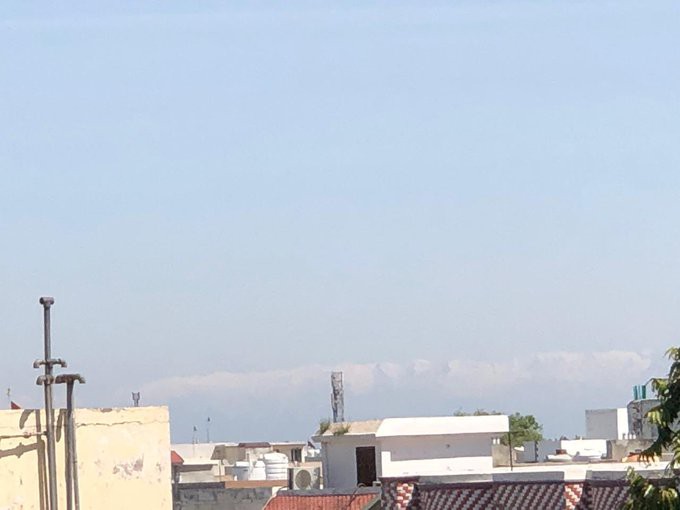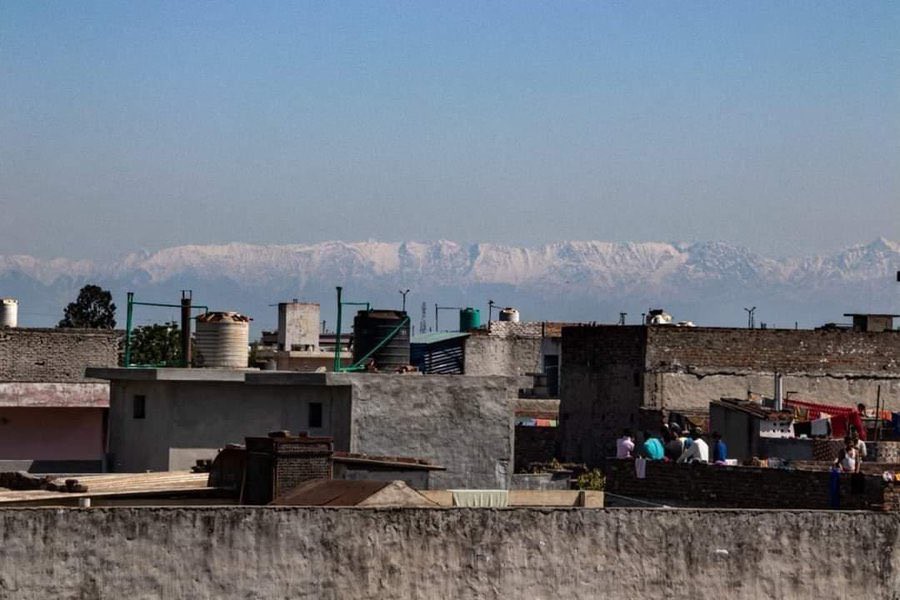Middle School High School | Daily Do
Why Did COVID-19 Cause Environmental Changes?

Crosscutting Concepts Earth & Space Science Environmental Science Is Lesson Plan Phenomena Science and Engineering Practices Middle School High School Grades 6-8 Grades 9-12
Sensemaking Checklist




Introduction
In today's Daily Do, Why did COVID-19 cause environmental changes?, students engage with the phenomenon of environmental changes (e.g., less air pollution, clearer water, more animal sightings) caused by COVID-19 (shelter-in-place). Students read articles or watch videos showing some of the changes we have seen in the environment that have accompanied changes in our travel patterns. Encourage your student to ask questions, then research answers to those questions.
Why Did COVID-19 Cause Environmental Changes?
During the COVID-19 pandemic, many changes have occurred. People are staying home, and this has had several impacts on the environment. We may have seen reports on the news about decreases in air and water pollution, which causes us to think: Why did COVID-19 cause environmental changes?
Have you started to notice more animals visiting your neighborhood? Cleaner water in a nearby river, creek, or stream? Less haze in the sky? These are some of the things we will explore in today's task.



Introducing the Phenomenon and Raising the Question
To introduce the phenomenon, show your student some images or video that have circulated in the news lately about changes in the environment since shelter-in-place ordinances have been issued in response to COVID-19.
"The water in Venice, Italy's canals is running clear amid the COVID-19 lockdown—take a look" by Catherine Clifford
"People in India can see the Himalayas for the first time in 'decades,' as the lockdown eases air pollution" by Rob Picheta
"Satellite images: Air pollution in India plummets" posted by EarthSky
"Satellite data show 30% drop in air pollution over northeast U.S." posted by EarthSky
Coronavirus outbreak: No tourists at Yosemite National Park brings out wildlife video
As coronavirus slows travel, pollution is slowing down, too video
Ask leading questions such as these:
- What do you notice about the water?
- What do you notice about the sky?
- Why do you think these changes have occurred?
Tell Us What You Know...
Encourage your student to share what they know (or think they know) about why these changes have occurred.
Ask them to "explain the science of why these environmental changes have occurred." Students may give many different reasons to explain why the changes have occurred, but the goal here is not to distinguish between right vs. wrong answers or ideas. Rather, we want to foster discussion about the "how" and "why" we are seeing these environmental changes (which will ultimately lead to making sense of how human activities impact the environment).
Assessing Prior Knowledge
Students may also call on knowledge from previous grade levels during this discussion.
- Early elementary-grade students (K–2) may know that people do things to help us live comfortably, and that can affect the world around them, but we can also take steps to lessen that effect.
- Late elementary-grade students (3–5) may identify that human activities have impacts on land, vegetation, streams, oceans, and air, but that individuals and communities are working together to help protect Earth's environments.
- Middle school students should identify that humans have caused significant changes to the environment, and that sometimes those changes can be negative, while at other times, they can be positive. They may also indicate that as human populations have increased, so has our consumption of natural resources and negative impacts on the environment.
- High school students may point out that humans can develop ways to manage natural resources and technologies to reduce our impact on the environment.
All of these connections to ideas and learning opportunities at previous grade levels should be encouraged by asking follow-up questions, such as "Can you tell me more about that?" or "How do you know that?"
What Questions Do You Have?
You can say something like, "It sounds like we have more questions than answers. What questions do you have about why COVID-19 caused environmental changes?" Encourage students to ask as many questions as possible that are relevant to the discussion.
Common questions include these:
- Why is the water cleaner now?
- Have the animals always been there, or are we seeing them more because we aren't moving around?
- Will things go back to how they used to be when we travel like we do normally again?
- How have things changed since places have begun to reopen?
Pursuing Common Questions
Have your student read the accompanying articles and reflect on what questions they were able to answer. High school students can engage in this activity independently. Younger students will need more assistance. After reading the articles, ask your student the following questions:
- What is one new thing you learned that you didn't know before?
- Which of our original questions did we answer in our discussion and by reading the articles?
- What other questions do you have about how humans impact the environment?
Developing Explanations—Optional Extension
Have students create an explanation that answers their original question: "Why did COVID_19 cause environmental changes?" There are several ways to elicit student explanations, including these:
- written explanation
- creating a model
- building understanding discussion
You can also incorporate a prediction component that includes what they think might happen now that people have begun to move around more.
Guidance. Having students develop an explanation allows them to think through what they have figured out to make deeper connections. As students engage in creating their explanations, they have time to think about and synthesize all the different pieces of information they analyzed throughout their research to figure out how it all works together. Many times while creating their explanations, students will come up with more questions.
How Do Human Activities Impact the Environment?
Now that we understand more about how humans impact the environment, it makes us wonder about ways we can reduce our impact. Students can examine more changes in the NSTA Daily Do How Does a Pandemic Cause Less CO2?


